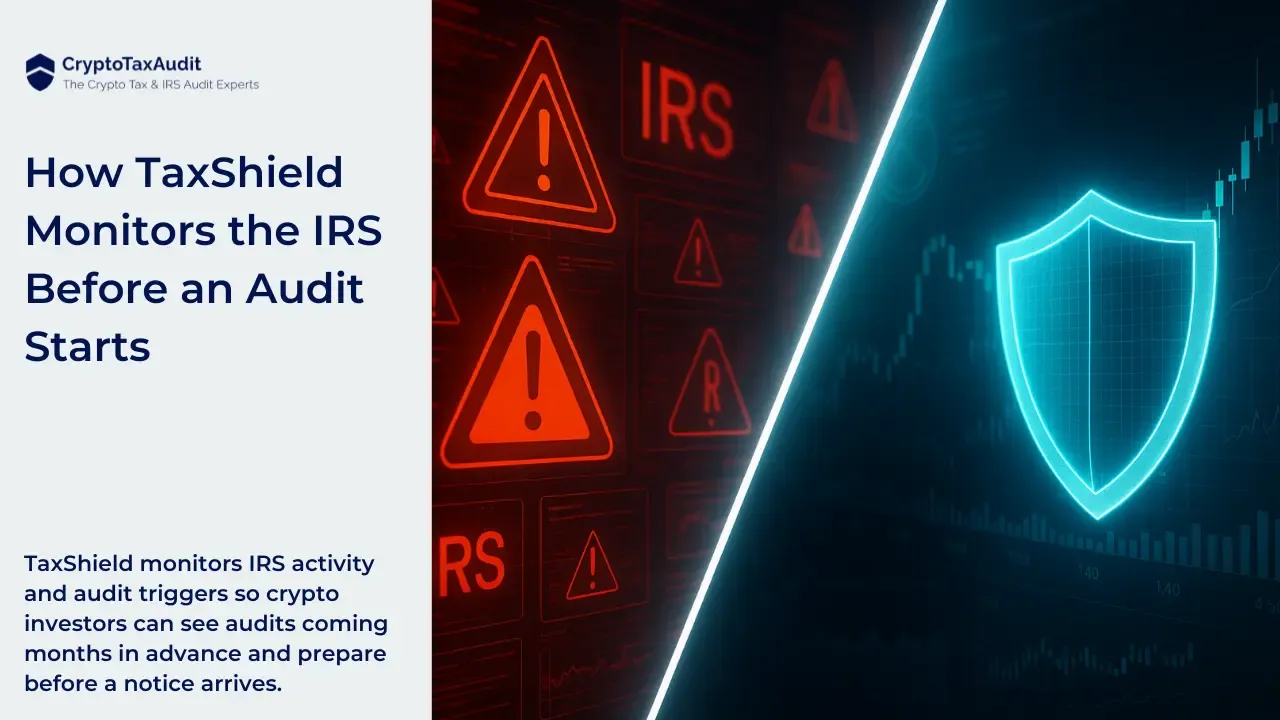
Crypto losses have silver linings, and claiming them properly can reduce your taxes due. Learn how to report 6 types of losses and profit in the end.
Crypto trading losses.
Many crypto traders are angry and embarrassed over significant trading losses. As a result, many traders didn't report these crypto losses on their tax returns.
Many crypto investors were also confused by the 2017 tax law change, which limited personal losses to only those occurring in federally declared disasters (165(h)(5)). However, crypto losses aren't personal losses. They are investment losses since they are transactions entered into for profit (165(c)(2)). So, the disaster limitation doesn't apply.
Losses have silver linings and claiming them can reduce your taxes! Read more to find out how to report 6 types of crypto losses and profit from them in the end.
1. Capital losses.
Every time you sell crypto for cash or swap it for another crypto, you realize a gain or loss (1.1001-1(a)). The amount realized from a sale, exchange, or swap of cryptos is the sum of any money received, and the fair market value of any cryptos received. The gain or loss is the amount received less the amount paid (cost basis).
At the end of the year, the gains and losses are added to get the net gain or loss from trading. Every loss reduces the net gain and, thereby, your taxes. When there is a net loss, it reduces your taxable income. Note, however, that Congress limits this reduction to just $3,000 per return. The excess loss is called the "capital loss carryover." It is applied to next year's return to reduce future gains.
A taxpayer story.
About a month ago, I spoke with a taxpayer who wanted help. In 2020, he had made a one million dollar gain. He had never reported his cryptos before on his past returns because they had been losses. He told me he had lost $400K in 2018. Then in 2019, he lost about $600K. He was ashamed of such a significant loss, so he didn't report it. So, I explained the power of the capital loss carryover. By declaring his 2018 and 2019 losses, he would pay almost no taxes on his 2020 gains!
Report all capital gain and loss transactions on Form 8949 and Schedule D.
2. Theft losses.
Crypto assets taken away from you illegally and with criminal intent can be deducted from your income (1.165-8). Theft also includes taking property by blackmail, embezzlement, extortion, ransom, larceny, and robbery. Indictment or conviction of a crime is not necessary to claim theft.
The most common way of stealing cryptos is by hacking wallets and phishing attacks. For example, in 2020, the Defi Project Yfdex.Finance (Yfdex) made off with $20 million of investors' money after only two days of promoting itself online.
Theft losses are reported on IRS Form 4684 Section B and Schedule A. The amount of loss reported is the cost basis of the lost cryptos.
3. Ponzi losses.
The crypto world is full of people promoting financial arrangements that are fraudulent. According to Chainalysis, Ponzi schemes account for 92% of all scams in crypto. And in 2019, almost $4.3 billion was lost in scams, Ponzies, and fake token sales.
The IRS created a special write-off for losses from Ponzi scams because of Bernie Madoff's massive scam discovered in 2008 (Revenue Procedure 2009-20 & 2011-58). If an indictment or complaint is filed against the scam operators, or the death of a lead figure occurs, the taxpayer can claim a Ponzi scam.
The challenge with claiming a loss from a Ponzi investment is that all the documentation is fraudulent or fabricated. The perceived gains in the investment are fictitious as well. The IRS offers a safe harbor procedure to make it easier for taxpayers to claim a loss. All you have to do is report the initial and subsequent investments (cost basis) and show that there was a formal indictment or complaint.
Ponzi scam losses are reported on Form 4684 Section C and Schedule A.
Ponzi scam tax treatment only allows writing off the amount invested (cost basis) and not the Ponzi promoter's alleged gains. Losses from fraudulent financial arrangements where no one was indicted or complained are treated as theft losses.
4. Abandonment losses.
Another type of investment loss is the abandonment loss which arises from the sudden termination of the usefulness of property (Reg. 1.165-2(a)). These are very open-ended as to what may have caused the loss of usefulness. Examples of abandonment of crypto losses include:
- An ICO token becomes worthless because the developer or promoter has given up on the project.
- Loss of keys to a wallet.
- Transferring crypto assets to a wrong address.
- Abrupt closing of a crypto exchange because of insolvency, not by fraud.
Another common loss is called an "exit scam”, a practice by unscrupulous cryptocurrency promoters who vanish with investors' money during or after an ICO. Since the promoters only existed on the internet and can't be found again, the investor gives up. An exit scam can be treated as abandonment rather than theft if there is no proof of criminal intent.
All of these are examples of sudden termination of the usefulness of the property.
Report abandonment losses on Form 4797 Part II Line 10 and Schedule 1.
Abandonment losses are subject to net operating loss limitations, which are generous.
5. Involuntary conversion.
For crypto traders, involuntary conversion is when a property is involuntarily converted (the converted property) and replaced by other property (the replacement property) (1.1033(a)-2). An example of this is when Crypto.com replaced its MCO token with the CRO token. Involuntary conversions are not treated as a sale or exchange.
Generally speaking, the basis of the converted property becomes the basis of the replacement property.
Report involuntary conversions on Form 4797 Part I & II and Schedule A.
6. Casualty losses.
Casualty losses are property losses resulting from identifiable events that are sudden, unexpected, and unusual, such as fire, flood, earthquake, car accident, storms, terrorism, etc. (1.165-7 and Rev Rul 72-592). Casualty losses differ from abandonment because they are unexpected and unusual. These casualty losses are predominately losses of physical property. Since cryptos are intangible, casualty losses for the investor are rare.
Casualty losses are reported on IRS Form 4684 Section B and Schedule A.
The amount of loss reported is the cost basis of the lost cryptos.
Proving a crypto loss.
The challenge in claiming a loss is proving that the loss happened. You should be able to prove how much was taken and when, if audited. Evidence of the loss should be kept in your permanent tax records, reconciling a loss with your crypto gain calculation service.
A lost coin other than a capital loss will cause your coin inventory on crypto gain calculation services to be incorrect. This will not cause a problem doing calculations for the year of loss, but you will need to adjust your coin inventories to reflect the loss of coins.
Reporting a crypto loss using tax software.
Unfortunately, retail tax services like TurboTax, TaxACT, and H&R Block Online do not support entering all these types of losses into their application. Why?
These software products are more concerned about protecting their accuracy guarantees than giving customers the full range of tax options. They fear customers will incorrectly enter information about losses which will cause problems for their accuracy guarantees. For this reason, we recommend that crypto taxpayers doing their tax returns use Online Taxes software (OLT.com), which is an IRS Free-File software package that supports reporting all types of losses. OLT supports almost twice as many IRS forms as its competitors. They empower taxpayers to claim all their losses.
Will claiming my crypto losses cause an audit?
No, based on recent experience, it will not cause an audit. In recent years, the IRS has developed a process they call compliance campaigns. Every year, each IRS division selects several campaigns that determine what types of non-compliance they will pursue. Every division has a general cryptocurrency compliance campaign. These campaigns are general and not focused on loss reporting. Loss reporting has not been an area of abuse by crypto owners.
Monitor your IRS account to be safe.
At CryptoTaxAudit, we recommend that all taxpayers become members of Audit Defense, our flagship membership service. It provides an early warning service which monitors your IRS account weekly to see if any of you rpast tax returns have been flagged for an audit by the IRS supercomputers.
If so, we notify you immediately. Typically, there are six months before the IRS assigns an auditor to start an audit after your account has been flagged. That is enough time to correct anything lacking in your return and refile before the audit begins. Thereby, you avoid the 20%-40% accuracy penalty plus considerable interest.
Members also get access to a complimentary course on preparing their own "bulletproof" tax returns and reporting cryptos. Accurately reporting all your crypto losses is one of the keys to saving money on your taxes.
Learn more about IRS Guard Dog at CryptoTaxAudit.
DISCLAIMER: Opinions and perspectives of the author, host, and guests. It should not be construed as U.S. taxpayer advice. There are often multiple interpretations of tax law. Various strategies may be suited to specific individuals and for particular situations. Seek out professional tax, legal, or financial advice from CryptoTaxAudit or from other reputable companies.





